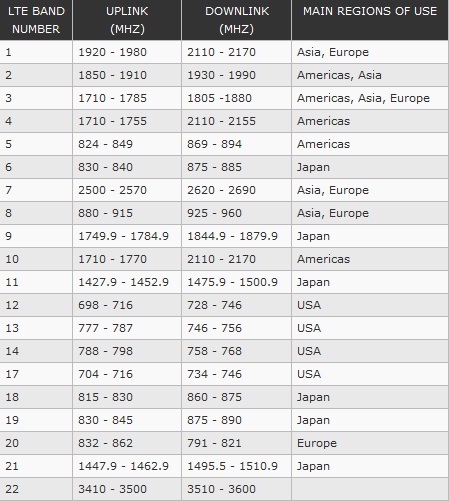LTE devices operate in either of two modes: TDD (time domain duplex) or FDD (frequency domain duplex). In FDD transmission and reception takes place at different frequencies whereas in TDD transmission and reception takes place at the same frequency but different time slots. The are separate frequency allocations for these two modes but some bands are common between the two modes. Given below are the frequency allocations for FDD.
There is suitable separation between the uplink and downlink frequency bands (at least 10MHz) so that the transmitted signal does not feedback into the receiver. It is extremely difficult to build a device that works in all of these 22 bands (due to limitations of practical antennas). Practical devices would at most be quad-band or penta-band. So an LTE device that would work in all parts of the world is more of a dream!
Author: Yasir Ahmed (aka John)
More than 20 years of experience in various organizations in Pakistan, the USA, and Europe. Worked as a Research Assistant within the Mobile and Portable Radio Group (MPRG) of Virginia Tech and was one of the first researchers to propose Space Time Block Codes for eight transmit antennas. The collaboration with MPRG continued even after graduating with an MSEE degree and has resulted in 12 research publications and a book on Wireless Communications. Worked for Qualcomm USA as an Engineer with the key role of performance and conformance testing of UMTS modems. Qualcomm is the inventor of CDMA technology and owns patents critical to the 4G and 5G standards.
